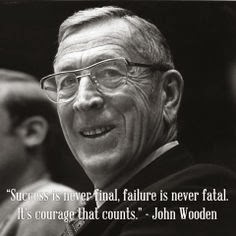1970 is remembered in the history books for all sorts of noteworthy events that are not remembered with any fondness — the My Lai massacre, the aborted space mission of Apollo 13, the Kent State shootings.
But 40 years ago today, a thoroughbred racehorse that is remembered by many as the greatest of all time was born.
He was Secretariat, the first horse to win racing's Triple Crown (the Kentucky Derby, the Preakness, the Belmont Stakes) in a quarter of a century. In fact, his times in the Kentucky Derby and the Belmont set records that still stand today.
 I will always remember watching the Belmont in 1973 in anticipation of the first Triple Crown winner in my life. So often in the years since, a horse has entered the Belmont (also known as the "Test of the Champion" because it is the longest and final race of the Triple Crown) with wins in the Kentucky Derby and the Preakness only to go down in defeat in the Belmont.
I will always remember watching the Belmont in 1973 in anticipation of the first Triple Crown winner in my life. So often in the years since, a horse has entered the Belmont (also known as the "Test of the Champion" because it is the longest and final race of the Triple Crown) with wins in the Kentucky Derby and the Preakness only to go down in defeat in the Belmont.But Secretariat did not disappoint observers on that Saturday in June. He seized control of the race early and romped to a 31–length victory, covering the 1½–mile distance in 2:24. He left no doubt in anyone's mind that he deserved to be the Triple Crown winner.
His achievement is commemorated by a statue at Belmont Park.
Because of a deal his owner made, Secretariat didn't race past the age of 3 and was retired to stud, but he never produced any offspring that came close to duplicating his accomplishments. Nevertheless, his reputation led to the sale of one of his early progeny for more than $1 million, something that had never happened before.
Secretariat's life ended in October 1989 when he was euthanized.








